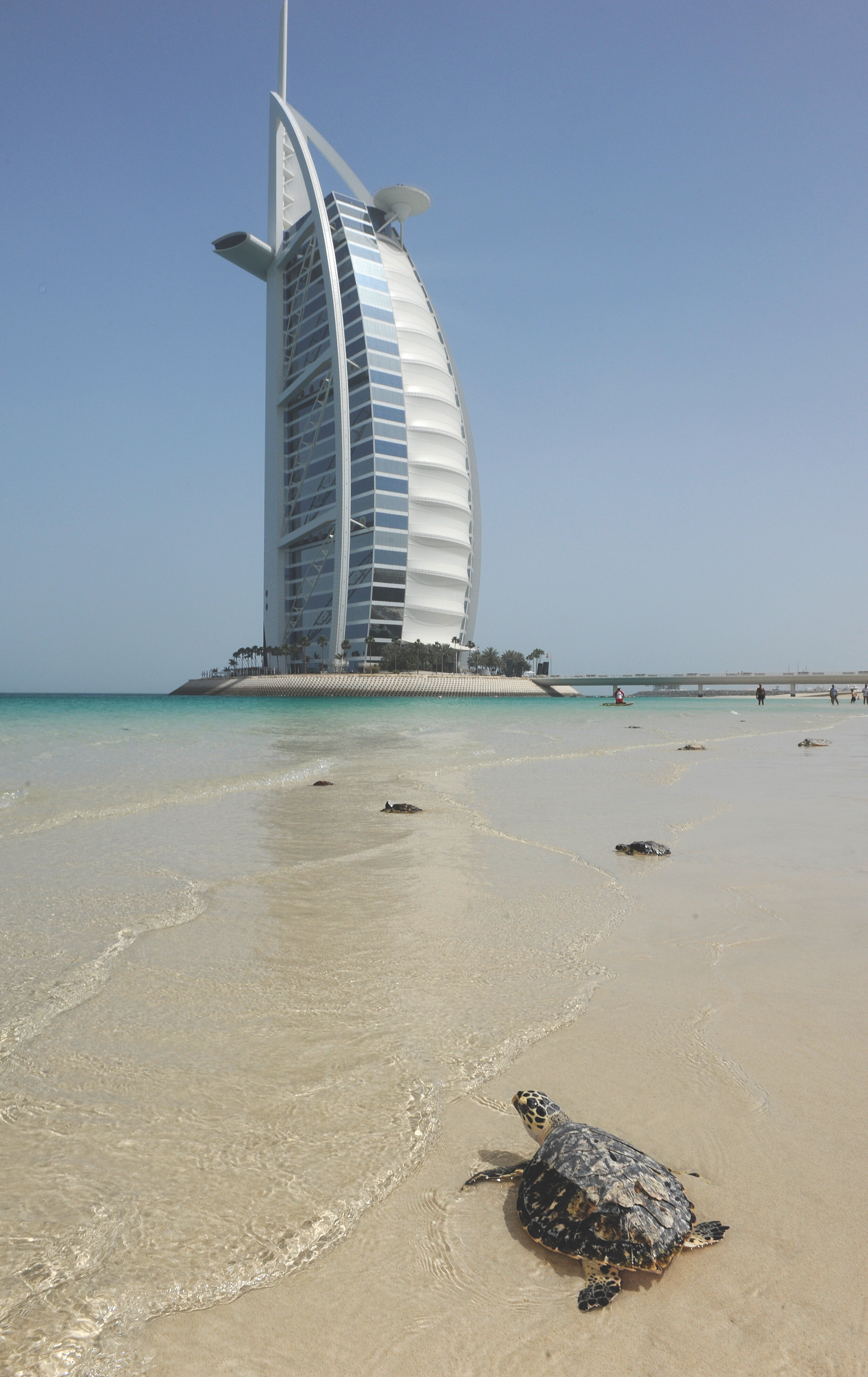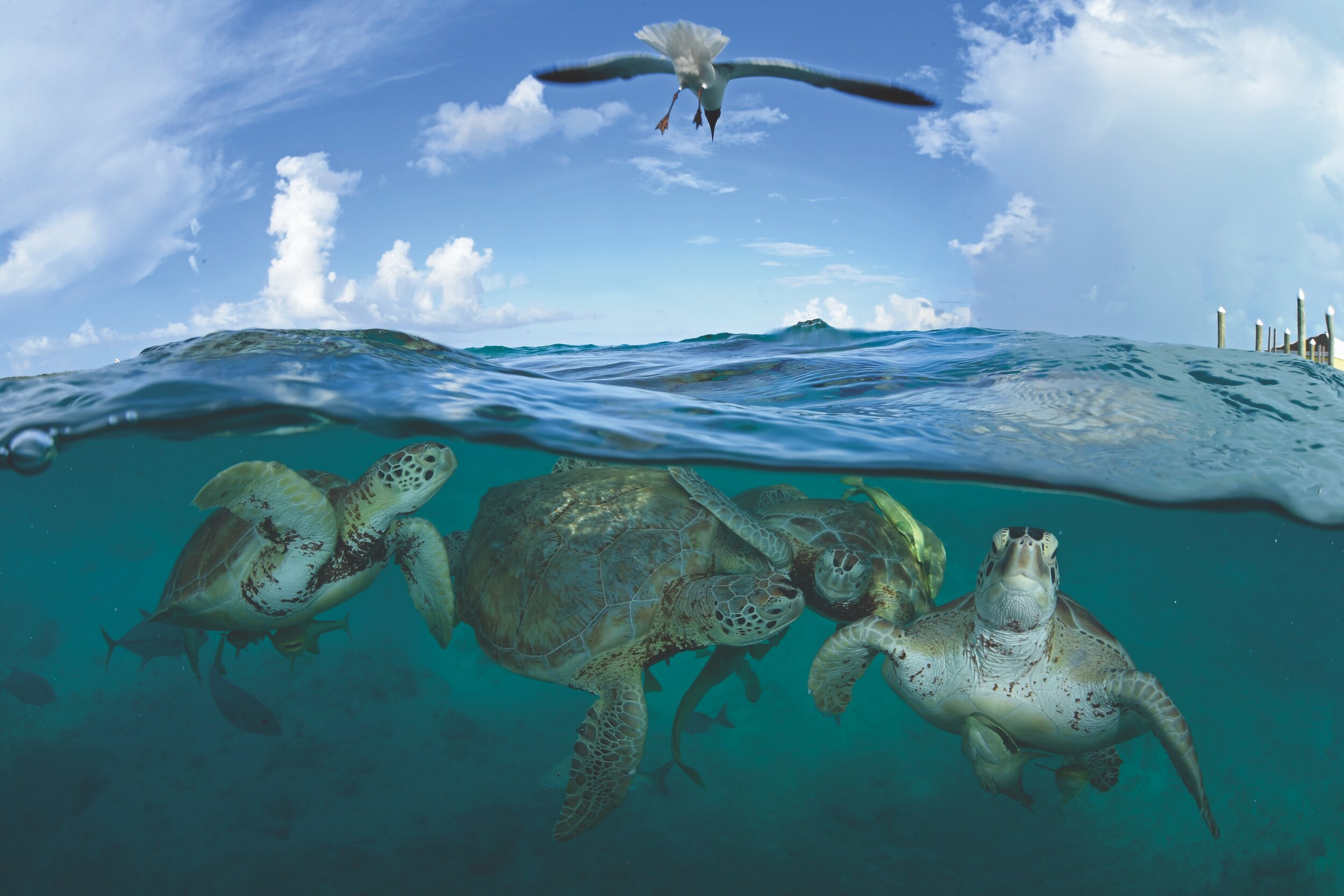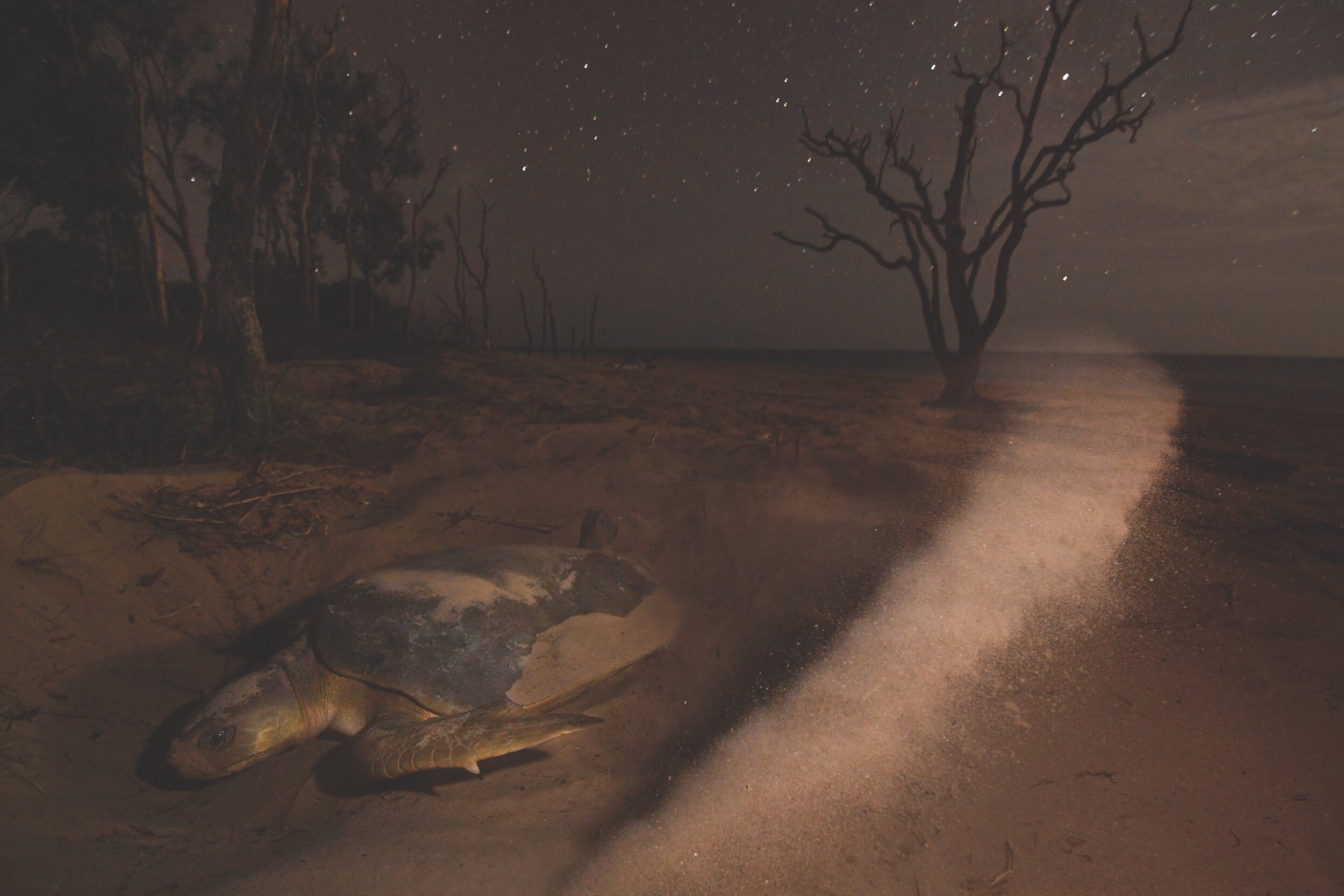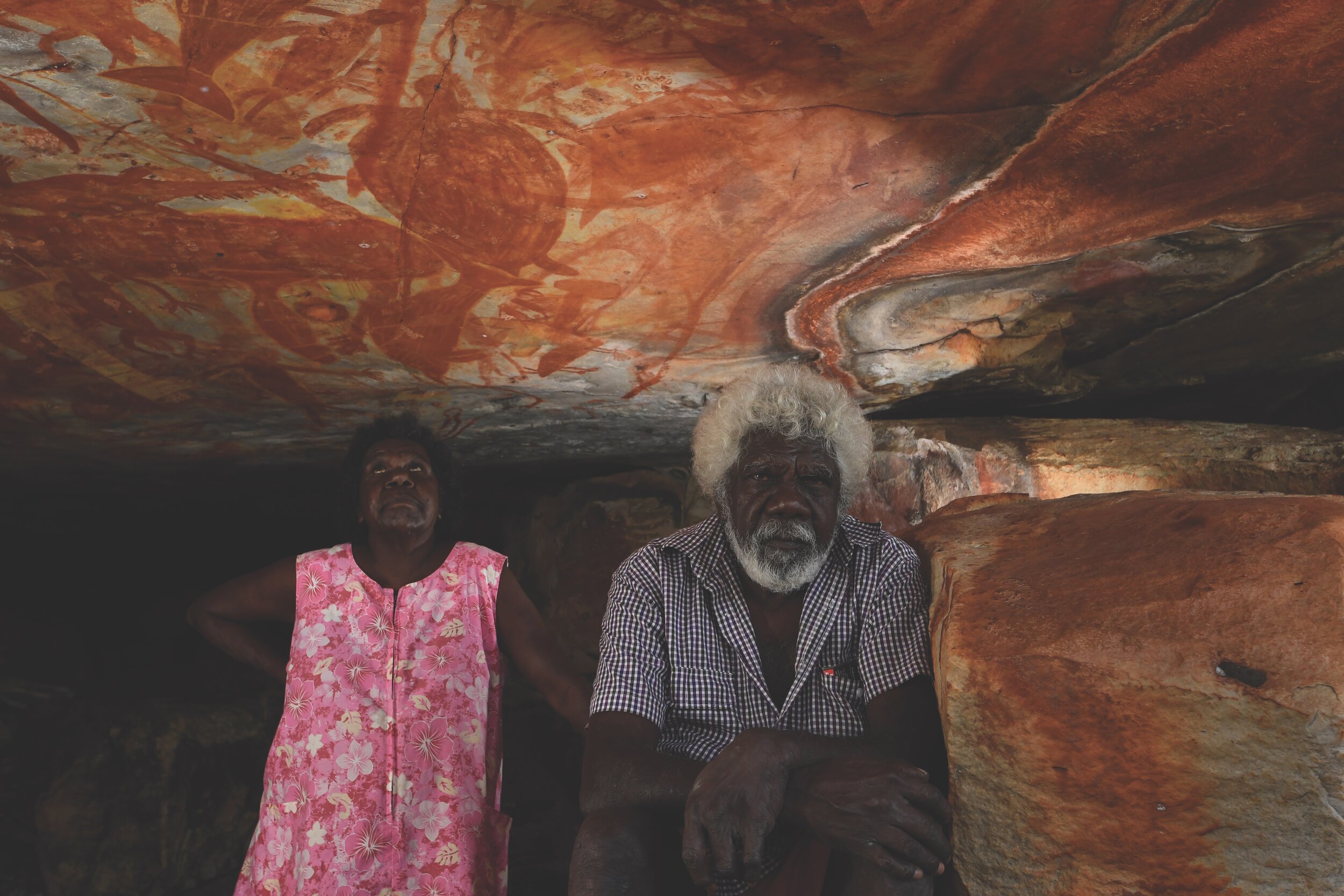Sea Turtle Stories From Behind the Lens of Thomas Peschak
Farmer’s Cay, Bahamas – Before this shoot, my perception of green turtles was of a regal, elegant, and serene species, but here I witnessed a totally different reality. When green turtles are this numerous and there is fresh food to compete for, the façade of serenity falls away, and surprisingly assertive predators are revealed. It was astounding to see the speed and agility with which the turtles darted around snapped up conch fishing discards. I wanted to capture this frenetic chaos, so I waited until dusk, and reduced my shutter speed to translate the kinetic energy of the scene into blurs of motion. © Thomas P. Peschak
The majesty, beauty, and fragility of the world's oceans and coasts is uniquely brought to life on the printed page through the images and stories of National Geographic photographer Thomas Peschak. Educated in South Africa as a marine biologist, he fully embraced photography once he realized that his creative work could have greater conservation impact than his scientific research. His TED Talk, “Dive into an Ocean Photographer’s World” has been viewed more than 1 million times, and his @thomaspeschak Instagram account has 1.2 million followers. As a National Geographic explorer and fellow, and the director of storytelling for the Save Our Seas Foundation, Thomas now merges science with photojournalism to tackle critical ocean conservation issues around the world.
In his forthcoming book, Wild Seas, Thomas shares more than 200 remarkable ocean images—and the stories behind them—from close encounters with Galápagos sharks, to surfing seals, dancing albatrosses, and, of course, sea turtles. The book charts his transformation from a marine biologist to full-time conservation advocate, who—armed with little more than a mask, fins, and a camera—offers an impassioned case for revering and preserving the world’s oceans. Through vivid photographs of the ocean’s splendor and vulnerability, Thomas’s provocative book presents a compelling case for change.
Readers of SWOT Report are familiar with Thomas’s unique sea turtle shots, which have been featured in our pages over several years, including the iconic cover of SWOT Report, vol. V. Many more of Thomas’s artful images illustrated a once-in-a-generation feature article on sea turtles that appeared in National Geographic Magazine’s October 2019 issue. Titled “Sea Turtles are Surviving—Despite Us,” the article was written by Craig Welch. For nearly two years leading up to its publication, Thomas traveled to the remote ocean corners of Earth to capture the article’s photographs, garnering what we think are extraordinarily striking and unusual photographs of sea turtles, their habitats, and the humans who interact with them, plus stories to accompany them. In the pages that follow, and scattered throughout this volume of SWOT Report, are our favorite Thomas Peschak sea turtle images, accompanied by his words describing the inspiration, emotions, and techniques used to capture them.
Dubai, UAE – Because hawksbills are critically endangered, each individual is vital to the population, which is why the rescue and rehabilitation center in Dubai is so important. Cold-stunned animals that strand on the beach are transported to one of the world’s most luxurious hotels, where they are nursed back to health. Later they are released right in front of the Burj Al Arab hotel, one of the most iconic buildings in the world. By combining an endangered animal with a famous landmark, this rare photograph depicts an unusual and contrasting juxtaposition of an ancient animal with the ultra-modern human footprint. © Thomas P. Peschak
Farmer’s Cay, Bahamas – Jeremy Jackson’s paper “Reefs Since Columbus” references a description from one of Christopher Columbus’s voyages in the Caribbean in which green turtles were so numerous that his crew could walk to shore on their backs. I wanted to pay homage to this historical datum about Caribbean greens by re-creating a modern visual of that description. While researching locations, I discovered a fledgling ecotourism project where green turtles flock to docks where conch fishermen clean and discard bits of their catch. I was not disappointed—there was a swarm of green turtles around the docks, and as I lined up my shots from the water, it wasn’t difficult to imagine what the Caribbean may have looked like in the 1400s. © Thomas P. Peschak
Crab Island, Australia – I became obsessed with documenting flatbacks on this rarely photographed, remote, prehistoric island. Upon arriving, I quickly learned why so few photos of the place exist. The landscape is harsh—the sand flies, which swarm you in brutal heat of the day, are replaced by mosquitos at sunset. And although escaping the buggy heat for a dip in the ocean is tempting, the insects are preferable to the saltwater crocodiles that swarm the island during sea turtle nesting season. Early on, I decided I wanted to include these dead, ghostly trees in my photo, but it took nearly the entire two weeks for a turtle to nest there. While shooting long exposures in pitch darkness was concerning, it was also exhilarating to know that crocs were watching me and that I was sharing the beach with two ancient reptiles. I will forever be grateful to the indigenous rangers of the Apudthama Land Trust for keeping me safe while camping on the island. © Thomas P. Peschak
Kei Islands, Indonesia – I wanted to capture what could be perceived as a gory and sad event, but in a way that didn’t lead my audience toward any unfair conclusions. Thus, I chose to tell this story with artful subtlety instead, emphasizing the intricate relationship between the hunter and the turtle. A brutal scene played out above the surface, but underwater I was struck by the intimacy of the synchronized movements of the leatherback and its captor, blood delicately leaking from the harpoon wound in its carapace. This hunt, which was once sustainable, forces us to think about the thin line between preserving cultural rituals and finding sustainable alternatives. © Thomas P. Peschak
Arnhem Land, Australia – I had not set out to photograph indigenous rock art in Australia, but when I picked up a tourist book from the 1980s and the page opened to an old photo of sea turtle cave paintings, I was captivated. Finding the location was not so simple, however. After many wild goose chases through the bush, an anthropologist connected us with an aboriginal community in Northern Australia. Aboriginal elders Ida Mamarika and her husband Christopher Maminyama led us to a remote cave whose walls and ceilings were covered in marine-themed frescoes. After talking with them at length about their connection to sea turtles, I abandoned my original plan of photographing just the art and instead made this image to celebrate the story that became as much about the people as the paintings. © Thomas P. Peschak
This article originally appeared in SWOT Report, vol. 16 (2021). Click here to download the complete article as a PDF.






